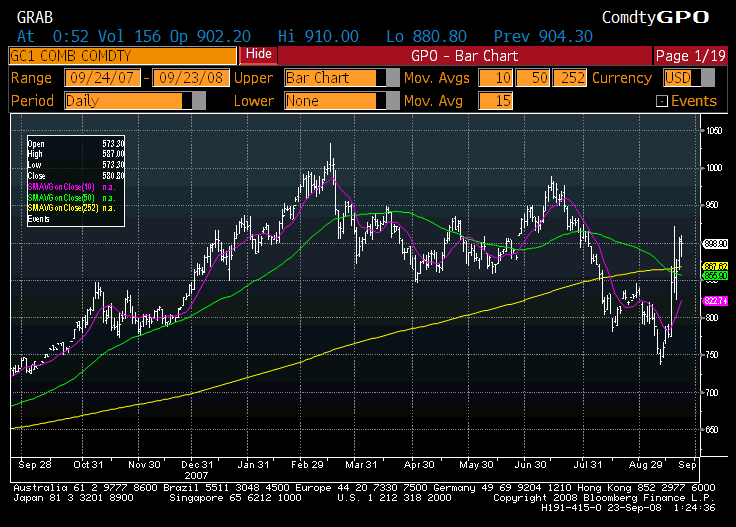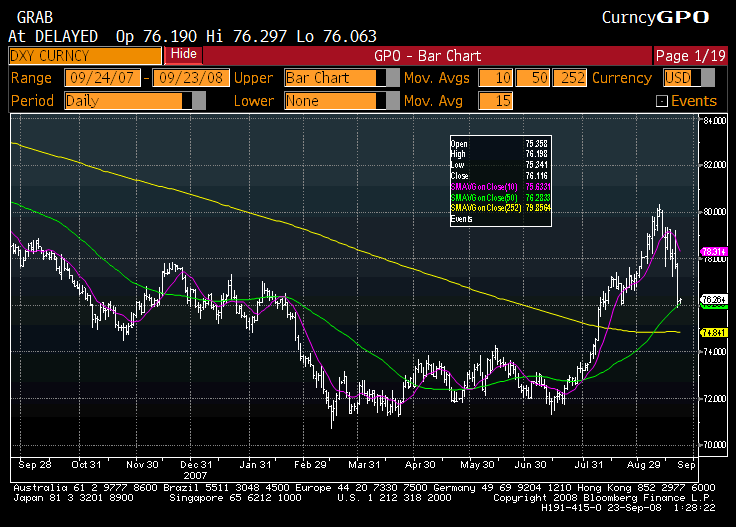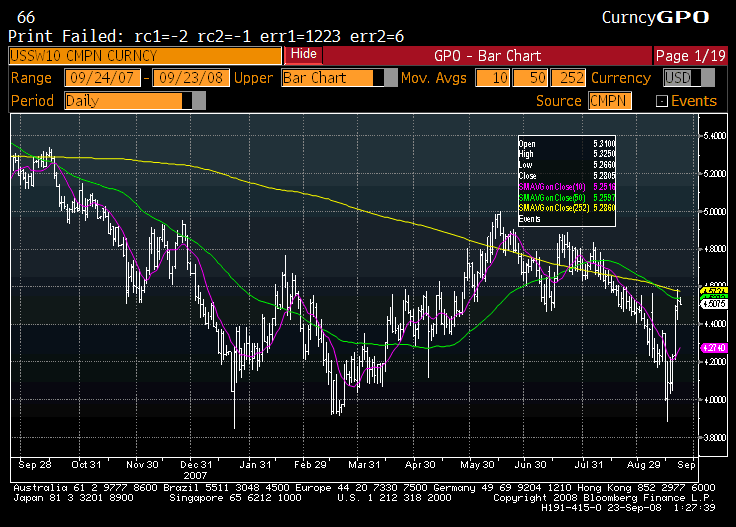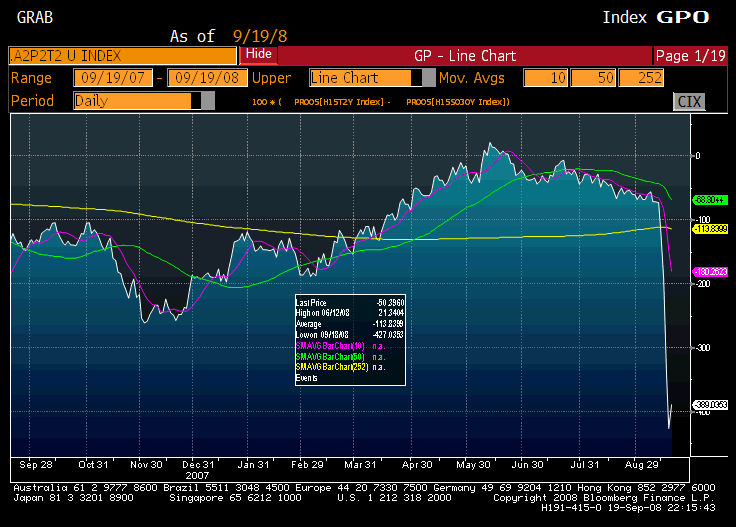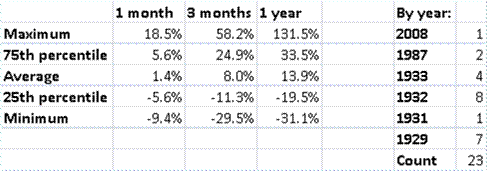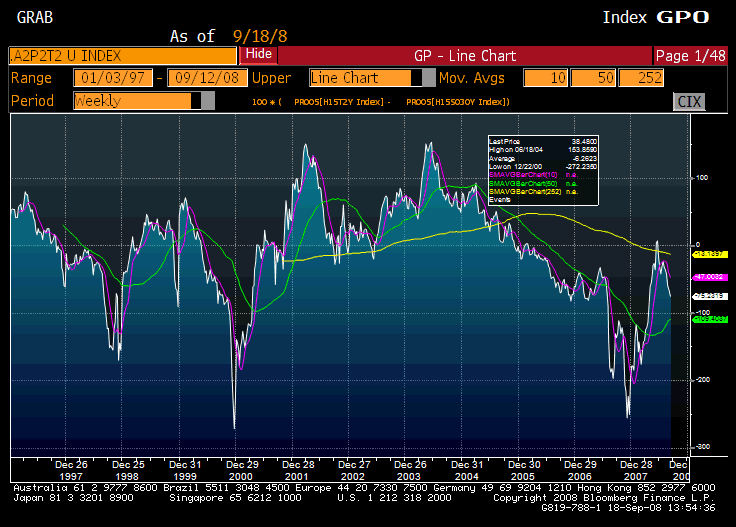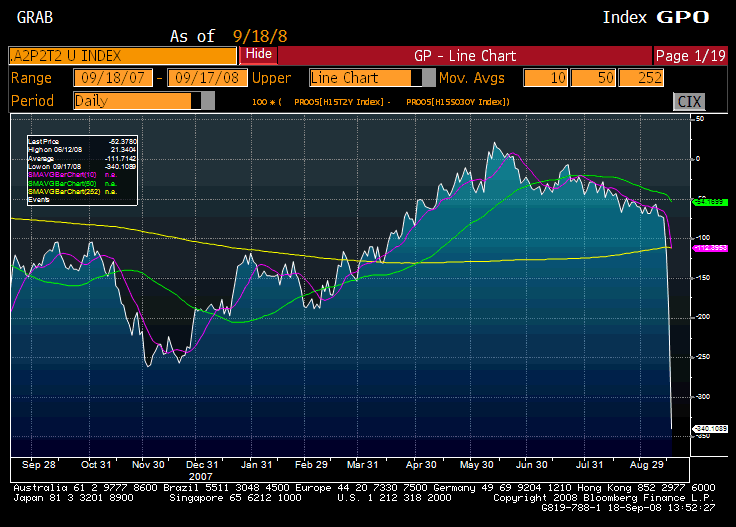Call Their Bluff
Twice in 2002, and once in 2001, I engaged in a risky form of financial behavior.? I was an investment grade corporate bond manager, and I was focused on financial names.? In 2001, post 9/11, we bought all of the out-of-favor sectors from September to November.? (I remember being at a conference for insurance CIOs in October, and seeing the horrified looks on the face of the other CIOs in a closed door session, when I said we were expanding our exposure to BBBs and junk, and hotels, Airplane EETCs, etc.? What topped it all was the representative from Conseco telling me how irresponsible I was.? Coming from Conseco, that made me blink.)
But we sold them all in the second quarter of 2002, when the hunger for yield was growing.? We happily sold our bonds that were now in favor for higher prices.? Then, with the accounting disasters at mid-year, on July 27th, two of my best brokers called me and said, “The market is offered without bid.? We’ve never seen it this bad.? What do you want to do?”? I kept a supply of liquidity on hand for situations like this, so with the S&P falling, and the VIX over 50, I put out a series of lowball bids for BBB assets that our analysts liked.? By noon, I had used up all of my liquidity, but the market was turning.? On October 9th, the same thing happened, but this time I had a larger war chest, and made more bids, with largely the same result.
At that point, I noted that the market was behaving differently.? Most of the troubled names were either dead or cleaned up, so I continued to buy yieldy long-duration financial bonds as the rally continued.? Aside from a hiccup as the Iraq war started, the rally that started October 9th persisted for a long while in equities and corporates.
Why am I telling this story?? Partly because the case for panic conditions in the fixed income markets, and with the banks is thin.? By the time we were in mid-2002, the equity markets were down far more from the peak, and implied volatilities were a lot higher.
Now, what is different at present is that the losses in this market are being led by financials, because in 2002 housing was not overvalued like it is today, and in 2002, the commercial and investment banks were not so highly levered.
So, looking at the two periods, I would rate the economic stress as pretty even across the worst of 2001-2002 and now.? We bounced back from 2002 without any bailouts.? Could it get worse from here in this present era of stress?? Yes, it could.? But at some level, enterprising investors come in without the aid of the government and begin buying assets where the downside is adequately discounted, and the upside ignored.? We are close to that now, with mortgage opportunity funds starting up.? Those won’t see the light of day if there is a bailout.
So, I’m not sure we need any bailout.? As Yves Smith at Naked Capitalism notes, the calls from average people to Capitol Hill are having an impact.? Keep making them.? Call the Treasury’s bluff.? If we prove wrong, well, the next administration will craft its own measures, rather than a bunch of unaccountable lame ducks who are unaccountable even when not lame ducks.? (Did I say that?? Sigh.? Repeat after me: This is not a political blog, this is not a political blog… and I voted for Bush twice, not that it matters much in Maryland.)? I agree with Naked Capitalism again — there may not be a true crisis.
But, I can look at it from another angle.? If I had $700 billion to spend as a clever investor (versus $30 billion for Buffett, earning 17% lending to Goldman Sachs), what would I do?? I would adopt the same approach that I did in 2002 (where my war chests were hundreds of millions), and get my analysts to percolate up their best ideas, and do rough estimates of what fair value is at a number of different discount rates.? I would start small, and offer lowball bids for hundreds of millions of seemingly mispriced securities.? I would adjust my bids as I found no takers or many takers.? Price discovery in illiquid bond markets is tough, but it is something I was good at in 2001-2003.? I would also leave markets where there is no rationality… I can invest anywhere, why should I limit my reach?? If Buffett can earn 16-17% off of Goldman Sachs, why should I look for much less?
Today, Bernanke suggested the use of reverse auctions to deploy bailout money at hold-to-maturity pricing levels.? My dear naive professor, markets avoid equilibrium, they do not seek equilibrium.? When the markets are in trouble, most players are in trouble, and there is not enough liquidity to bring the markets to long-run equilibrium levels in the short run.? The fundamental value of an asset is a relative concept, and depends on factors like the yield curve, implied volatility/credit spreads, etc.
The danger with the Treasury bailout proposals is that they will waste money by buying assets at levels above what the market will bear.? The danger with Dodd’s proposal is that they will drive companies into the ground through dilution from hasty asset sales.
Looking at it from a static standpoint, perhaps $5 Trillion would solve the crisis.? I think that would fill every hole, definitely.? But on a dynamic basis, you don’t need as much to move markets.? Once a buyer of size comes in, other players adjust their bids and asks.? So, if I had $700 billion of cash, I would have a hard time disguising my moves.? I would expect to send unused cash back to my funders.
Also, the difficulty of reverse auctions when you have so many disparate securities with small sizes is tough.? So, I look at this crisis, and think that if we wait for four months, the situation might be better, and no bailout will be needed.? If not, the next administration, not lame duck, would face the consequences.


